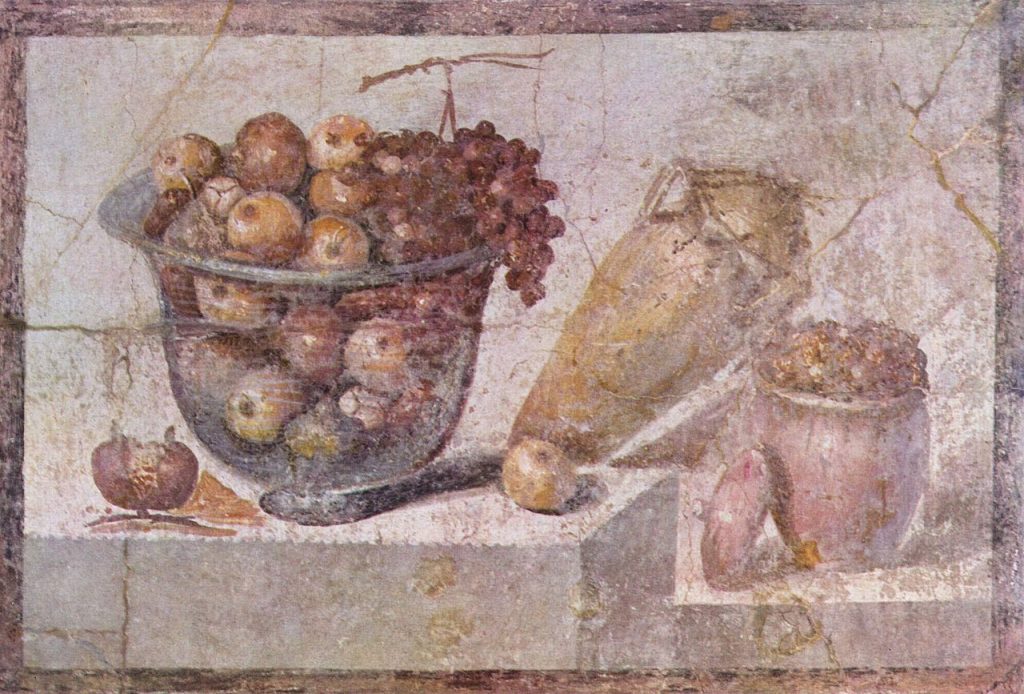5 Outrageous Things Ancient Romans Ate Posted by Brittany Britanniae on Feb 28, 2019 in Roman culture
Salvete Omnes!
I have been thinking constantly about food lately due to Valentines Day as well as New Year’s Resolutions. And how even the most dauntingly of culture and language immersion are often made easier through meal and food. As some may say – “Food is universal.” But is this true? Would really want to eat the food or delicacies from Ancient Rome?
The following ancient Roman food has been discovered through texts of histo ries or recipes or from archaeological evidence.
ries or recipes or from archaeological evidence.
- Flamingo Tongue; Pliny the Elder tells us in his Natural History ((X.133) “Apicius, the most gluttonous gorger of all spendthrifts, established the view that the flamingo’s tongue has a specially fine flavor.” More information here.
- Sea Urchins and Giraffe; Based on archaeological evidence “a drain from a central property revealed a richer range of foods including sea urchins, shellfish and even the butchered leg joint of a giraffe. Traces of exotic spices from Indonesia were also found” Steven Ellis, a classics professor at the University of Cincinnati stated “How part of the animal, butchered, came to be a kitchen scrap in a seemingly standard Pompeian restaurant not only speaks to long-distance trade in exotic and wild animals, but also something of the richness, variety, and range of a non-elite diet,“.More Information here.
- Exotic Birds: Parrots, Pheasants, and Peacocks; “He served to the palace-attendants, moreover, huge platters heaped up with the viscera of mullets, and flamingo-brains, partridge-eggs, thrush-brains, and the heads of parrots, pheasants, and peacocks.“(The Life of Elagabalus; Part 2; 20.6)
- Dormice; Stuffed Dormouse “Is stuffed with a forcemeat of pork and small pieces of dormouse meat trimmings, all pounded with pepper, nuts, laser, broth. Put the dormouse thus stuffed in an earthen casserole, roast it in the oven, or boil it in the stock pot.” (Apicius, De Re Coquinaria)
- Jellyfish; Smelt Pie, or, Sprat Custard “Boneless pieces of anchovies or other small fish, either roast [fried] boiled, chop very fine. Fill a casserole generously with the same; season with crushed pepper and a little rue, add sufficient broth and some oil, and mix in, also add enough raw eggs so that the whole forms one solid mass. Now carefully add some sea-nettles but take the pain that they are not mixed with the eggs. Now put the dish into the steam so that it may congeal but avoid boiling.2 When done sprinkle with ground pepper and carry into the dining room. Nobody will be able to tell what he is enjoying” (Apicius, De Re Coquinaria)
Would any of you try these things – have you tried these things and care to impart their tastes and flavors? Until next time, I hope you are well and look forward to writing on some Latin text!

Build vocabulary, practice pronunciation, and more with Transparent Language Online. Available anytime, anywhere, on any device.





Comments:
Tony Tea:
As if Garum wasn’t outrageous enough. I like fish sauce and Worcester as much as the next person, but the Romans must have had cast iron stomachs.
Dr. Kurt R. Fiedler:
historia Romana longa est–sed sic transit gloria mundi circa 410 anno Domini!
Vale, Dr.Fidelius Cospanus in Sans Souci Annapolis/USA.
Robert Thompson:
What type of fruits were
Eaten?